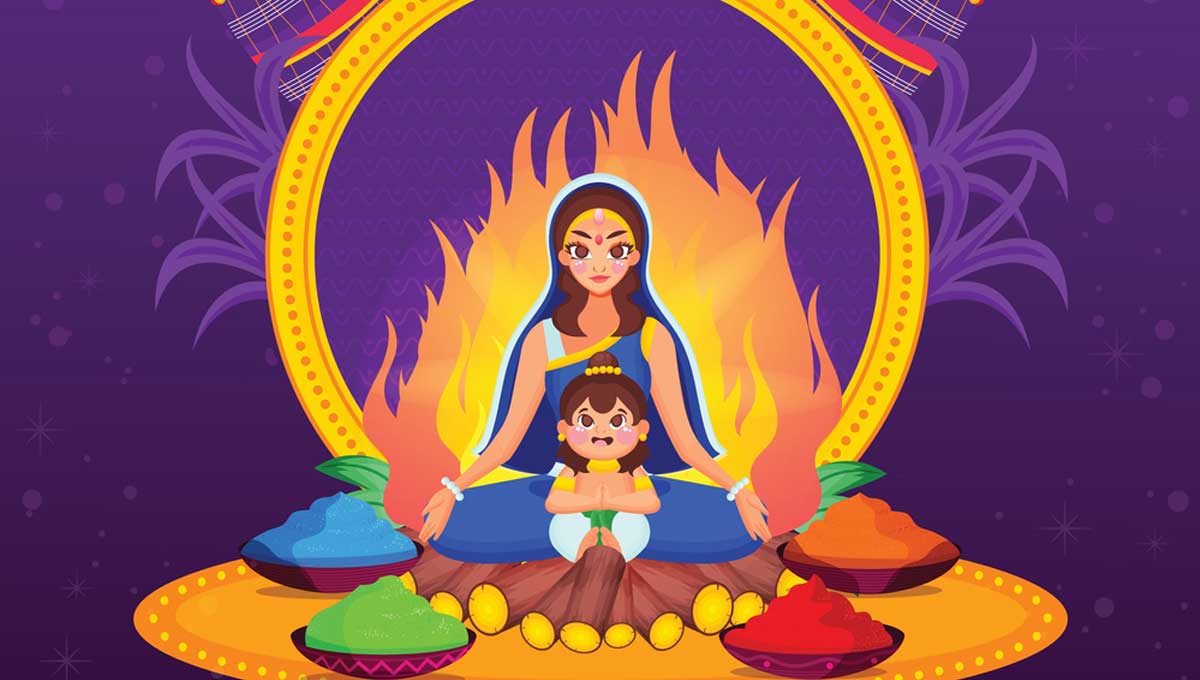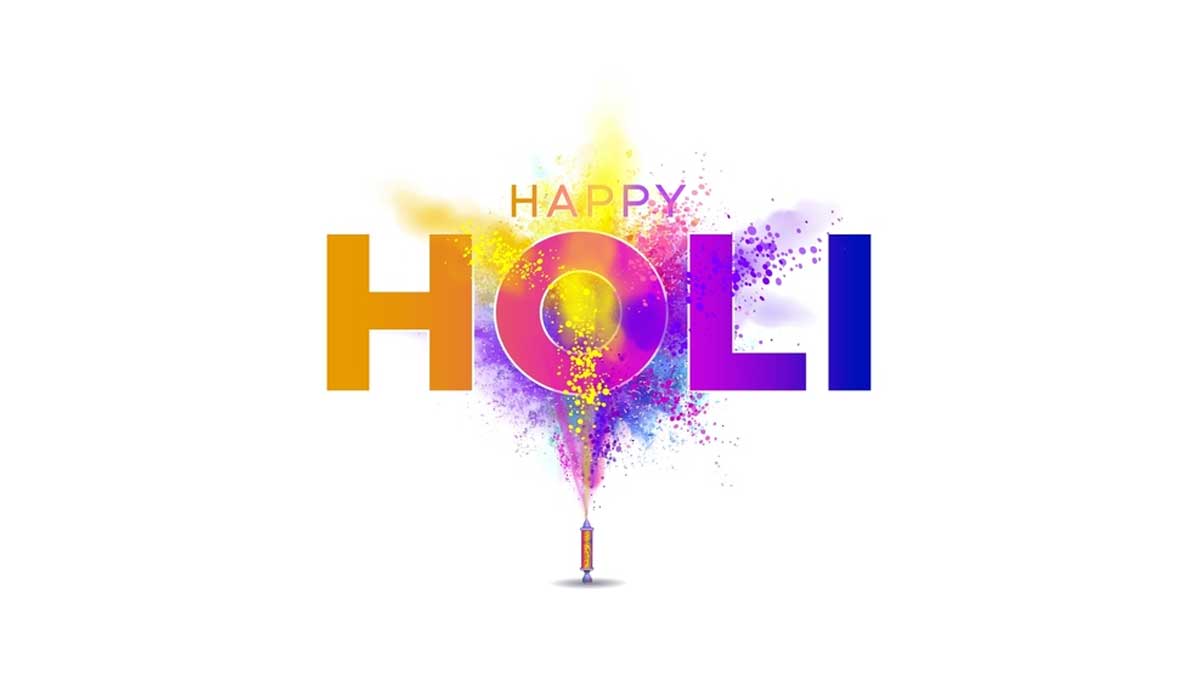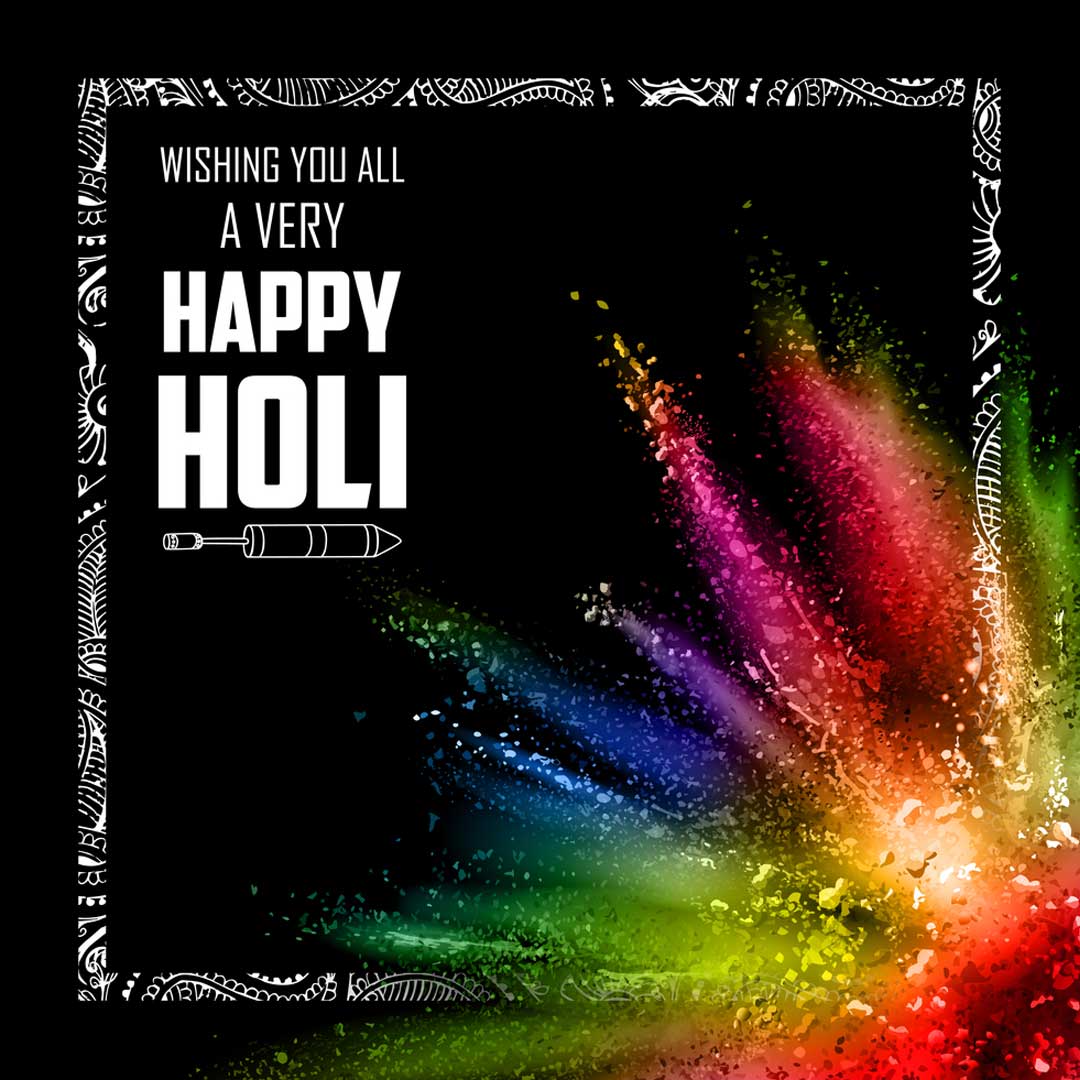When holi in 2025: Holi, the festival of colors and love, is one of the most awaited and celebrated festivals in India. Marking the end of winter and the arrival of spring, Holi spreads joy and happiness all around. In 2025, Holi 2025 will be celebrated on Friday, 14th March.

Holi is a two-day affair, with the first evening called Holika Dahan or Chhoti Holi and the second day called Dhuleti, Rangwali Holi, or Dhulandi. Read on to learn more about the date, day, calendar, history, significance, shubh muhurat and celebrations of Holi 2025.
When is Holi in 2025?
Holi 2025 Date in India: Holi 2025 in India is set to be observed on Firday, March 14th. According to the Hindu calendar, Holi is traditionally celebrated on the full moon day of the Falgun month each year. In 2025, the vibrant festival of colors, Holi, will take place on Friday, March 14th (which day is holi in 2025). The ritual of Holika Dahan will precede the main celebration and is scheduled for Thursday, March 13th, 2025, also known as Chhoti Holi.
- Holika Dahan (Chhoti Holi) – Thursday, 13th March 2025
- Dhulandi/Rangwali Holi – Friday, 14th March 2025 (what is the date of holi in 2025)
- Dhuleti – Friday, 14th March 2025
The dates for Holi are determined according to the Hindu lunisolar calendar, and the festival is celebrated on the Phalgun Purnima, which is the full moon day in the Hindu month of Phalgun. This typically falls in the months of February end-March the beginning of the Gregorian calendar.
Also Read: 2025 में कृष्ण जन्माष्टमी कब है? जानें सही तिथि, मुहूर्त, पूजा विधि और महत्व
Holi 2025: Shubh Muhurat Date and Timings
In India, Holi 2025 is observed on Friday, March 14, with Holika Dahan taking place on March 13th. The auspicious time for Holika Dahan in 2025 is from 11:26 PM to 12:30 AM, March 14. March 14th is dedicated to Rangwali Holi, a colorful and joyous celebration. Here are the auspicious dates, muhurat, and timings for Holi 2025:
- Purnima Tithi Begins = March 13, 2025 at 10:35 AM
- Purnima Tithi Ends = March 14, 2025 at 12:23 PM
- Holika Dahan Muhurat = 11:26 PM to 12:30 AM, March 14th
- Duration = 1 Hours 04 Minutes
- Bhadra Punchha = 06:57 PM to 08:14 PM
- Bhadra Mukha = 08:14 PM to 10:22 PM
Know the Holika Dahan 2025: Puja Vidhi
Holika Dahan is observed by encircling a wooden pyre with a white thread or Mauli (Kaccha Sut) three or seven times. The pyre is then revered with the ritualistic sprinkling of holy water, Kumkum, and flowers. After the puja is finished, the pyre is ignited.
On this day, individuals in India gather around a bonfire to commemorate the triumph of Bhakt Prahlad's devotion to Lord Vishnu. Holika Puja is also conducted at this time, thought to invite fortune and riches into each household. This ceremony empowers people to brace and conquer their own anxieties.
The Significance and History of Holi 2025
Bearing cultural and spiritual meaning for Hindus, Holi signals the harvest season's arrival and the victory of righteousness prevailing over wickedness. The colorful festival also promotes love, forgiveness, and harmony.
There are various legends associated with the origin of the ancient Hindu festival of Holi:
The Legend of Holika and Prahlad: In Vedic mythology, there is a legend of the demon king Hiranyakashipu who wanted everyone to worship him. But his young son Prahlad was an ardent devotee of Lord Vishnu. Hiranyakashipu asked his sister Holika, who had a boon to enter the fire unscathed, to sit on a pyre with Prahlad on her lap. However, Prahlad's devotion protected him while Holika burnt to death. The night before Holi celebrates Holika's death with large bonfires.
The Legend of Radha-Krishna: In Braj, where Krishna grew up, it is believed he complained to his mother Yashoda about Radha’s fairer complexion. Krishna’s mother jokingly asked him to colour Radha’s face in any colour he wanted. This later became a playful tradition of smearing colours between Radha and Krishna's devotees.
Story of Lord Kamadeva: It is believed Lord Shiva burnt Kamadeva, the God of desire, to ashes when he tried to disrupt Shiva’s meditation and evoke his interest in worldly matters. Kamadeva’s wife Rati pleaded and later Shiva agreed to bring him back to life. Holi marks this legend.
Legend of Ogress Dhundhi: According to folklore, there used to be an ogress called Dhundhi who troubled children. She was chased away by the shouts and pranks of the boys. The legend is honored on the night before Holi by igniting pyres and chanting age-old insults.
Story of Shiva and Parvati: Parvati wanted to bring back Shiva from meditation and smear gulal on his body to enhance their romance. But Shiva was deep in samadhi and not amused by the interruption in tapasya. He opened his third eye in anger and burnt her to ashes. Later, Parvati surrendered herself completely and Shiva was pleased, bringing her back to life. Their joyful reunion is celebrated as the Holi festival.
Celebrations and Traditions of Holi Festival
Holi is celebrated pan-India, but the festivities in North India, especially Mathura-Vrindavan, Barsana, and Dwarka are world-famous. People light bonfires, apply colors, visit family and friends, feast on sweets, and perform folk dances during the Holi celebrations.
Holika Dahan: On the eve of Holi, large bonfires are lit to mark Holika Dahan and remember the salvation of Prahlad. Effigies of Holika are burnt in the fire. The ritual signifies the victory of good over evil.
Playing with Colors: Playing with colored powders and water is the main highlight of Holi. Revelers smear and spray gulal and colored water on each other, creating a colorful, vibrant spectacle. It is carried out in the spirit of fun and bonding.
Dancing and Music: Folk songs, dances, and music form an intrinsic part of Holi festivities. People perform dance forms like Raas-Garba, Dandiya Raas, and Ghoomar while singing traditional Holi songs and chanting tunes of Radha-Krishna’s divine love.
Feasting on Sweets: On the occasion of Holi, people prepare sweet delicacies at home and exchange festive foods with loved ones. Gujiya, dahi vada, malpuas, mathri, thandai, and pakoras are common Holi delicacies.
Bhang Thandai: Many drink bhang, an intoxicating infusion of cannabis leaves and roots in milk, as prasad. The drink is associated with Lord Shiva and is considered auspicious. However, overindulgence should be avoided.
Visiting Family and Friends: People visit family members, relatives, and friends to spread the cheer of the colorful festival. It is a time to heal relationships and exchange sweets, greetings, and gifts.
Forgiveness: Holi signifies letting go of grudges and ill feelings towards others. People reconcile with enemies and make amends on this festival by smearing colors on each other.
Tradition of Colours: Brightly colored gulal and abeer are key elements of Holi. People apply colors on other's faces and also throw dry and wet colors in the air. Though traditionally made from flowers and herbs, commercial chemical-based colors are now used extensively.
Customs and Rituals: Different customs and traditional rituals are part of Holi celebrations in different regions of India. Wearing white-colored clothes, lighting bonfires, playing with colors, collectively singing folk Holi songs, and visiting temples are some common rituals.
Holi 2025 Celebrations Across India
Holi is celebrated passionately all over India but the festivities of the Braj region around Mathura-Vrindavan, Barsana, and Nandgaon, and the Lathmar Holi of Barsana are world-renowned.
Barsana Holi: In Barsana near Mathura, Lathmar Holi is celebrated where women beat men with sticks and men try to shield themselves. It is a unique tradition.
Mathura-Vrindavan Holi: As the land of Lord Krishna’s birth, Mathura-Vrindavan celebrates Holi in the form of Raas Leela with great fervor. People recreate the divine love between Radha and Krishna.
Uttar Pradesh Holi: The Holi of UP is vibrant and colorful. People across the state started gathering raw materials for gulal and pichkaris much in advance.
Gujarat Holi: In Gujarat, people decorate the cows with flowers and colors as part of Holi festivities. Bhang consumption is also common. Folk songs, dances, and processions are organized.
Bengal Holi: Holi is celebrated as Dol Jatra or Dol Purnima in Bengal. It is a spring festival where idols of Radha and Krishna are ceremonially paraded through the streets.
Punjab Holi: Punjabis celebrate Holi with immense energy and vigor at the Basant Utsav in Shantiniketan. The folk dance bhangra and dynamic beats of dhol are integral to Holi here.
South India Holi: In South Indian states like Andhra Pradesh, Karnataka, Kerala, and Tamil Nadu, Holi is celebrated as Kamadahana or Kaman Pandigai with more religious fervor.
Maharashtra Holi: Five days after Holi, Rangpanchami is celebrated in Maharashtra where people throw gulal and spray colored water on each other.
Goa Holi: The Holi celebrations of Goa are marked by vibrant processions, folk songs, and performances. Tourists also join in the festivities.
Odisha Holi: In Odisha, the festivities start a week before the actual Holi with cultural events like plays, dance performances, and devotional singing competitions.
Assam Holi: The spring festival Bohag Bihu coincides with Holi in Assam. People celebrate Holi by lighting bonfires, playing with colors, and singing Bihu songs.
Holi Celebrations Around the World
The Indian diaspora also celebrates Holi with great enthusiasm in countries like the USA, UK, South Africa, Malaysia, Singapore, Canada, Fiji, West Indies, etc. Companies organize Holi events so that people can come together and enjoy. Holi now is recognized as a global festival of love, unity, and harmony.
What Bestows Holi the Epithet "Festival of Colors"?
Holi is rightfully known as the Festival of Colors due to the exuberant and vibrant traditions that characterize its celebrations. Grounded in legend, this venerable Hindu celebration denotes the victory of virtue against vice and the spring season's commencement. The festivity draws its appellation from the vibrant revelry emblematic of its commemoration.
Holi sees people merrily participate in tossing and smearing brightly-hued powders, cultivating a mosaic of tints that refashions communities into animated paintings. This deed signifies the dismantling of social obstacles, as individuals across ages, backgrounds, and standings congregate within the vivid jubilation. The dynamic shades utilized during Holi form not solely a visual pageant; they bear more profound meaning, typifying life's variegated complexions and the harmony binding mankind.
The festivity's color-centric linkage further spans the lore of Lord Krishna, reputed to have mischievously showered Vrindavan hamlet in hues, including the iconic "gulal" or tinted powder. Holi's vibrant grandeur personifies blitheness, solidarity, and the regeneration accompanying spring's advent, rightly bestowing it the moniker Festival of Colors.
Safety Tips for Holi Celebrations
Amid all the fun and revelry, one must keep safety first during Holi celebrations. Here are some essential safety tips:
- Avoid direct contact with chemical colors and check the ingredients for suitability with your skin type to prevent irritation.
- Apply coconut oil, olive oil, and vaseline on the skin and hair before playing with colors, as it helps prevent absorption.
- Wear old clothes to save your daily wear and designer outfits from permanent stains.
- Don’t allow colors to get into your eyes, ears, and mouth, to avoid infections.
- Drink only from sealed water bottles and eat only from hygienic places to prevent sickness.
- Remain sober and avoid over-consumption of bhang and alcoholic drinks.
- Say no to harassment of any kind during Holi revelry.
- Be watchful of miscreants who try to spoil the festive spirit. Report any wrongdoing to authorities.
- Don’t waste water and keep the environment clean. Opt for natural, eco-friendly colors.
- Drive carefully and avoid rash driving, drunken driving, or triple riding on bikes.
Conclusion
The vibrant festival of Holi is celebrated enthusiastically by all Indian communities as a time for merriment and togetherness. People look forward to spraying colors on each other, feasting on sweets, and repairing relationships. From lighting bonfires to playing with pichkaris, applying gulal, and visiting loved ones, people immerse themselves fully in the festive fervor. Holi spreads the message of the triumph of virtue, the glory of springtime, and the rejuvenating power of love. The special rituals, traditions, and customs enrich India's cultural diversity. Holi 2025 promises to be as exciting and colorful as ever!
FAQs
When is Holi 2025?
Holi is on which date 2025: Get information on the exact date and time for the celebration of Holi in 2025. Know the date: Friday, 14th March 2025.
What is the significance of Holika Dahan in 2025?
Understand the historical and cultural importance of Holika Dahan, and learn about the auspicious timing (Muhurat) for the ritual in 2025.
Can you provide a brief history of Holi?
Delve into the legendary past and cultural meaning behind Holi, illuminating the folklore surrounding its inception and passage through history.
How is Holi traditionally celebrated in 2025?
Discover the customary practices and rituals associated with the festival, including traditional customs observed during Holi celebrations in 2025.
Are there any special events or customs unique to Holi 2025?
Learn about any specific events, regional variations, or unique customs associated with the celebration of Holi in the year 2025.










